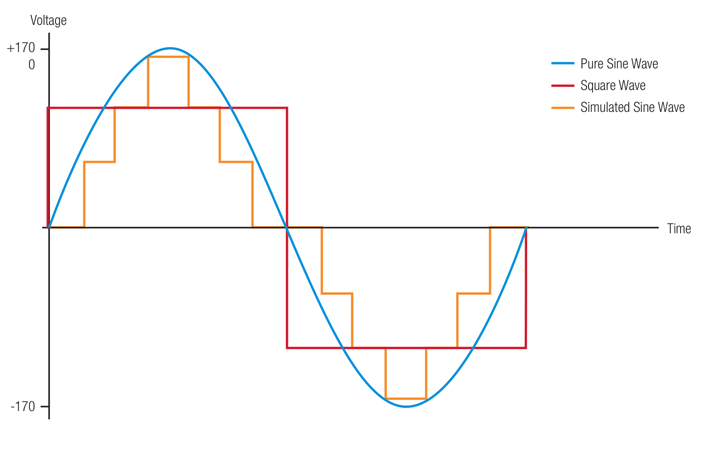

The differences between sine wave UPS and square wave UPS
“Do you want get a Sine Wave Inverter or Square Wave Inverter?” Perhaps, this is one of the most common questions you'll get when you try to select UPS(uninterrupted power supply/battery backup) systems. If the difference between the two waveform types confuses you, you can take a look at this article:

There are three main waveform types produced by UPS power system:
This is the best waveform, as it is the shape of an (ideal) AC electrical signal from the utility. The highest quality UPS produce a pure sine wave output, which requires fairly expensive components in the inverter – This is especially important for online UPS, since their loads are always running off the inverter. Nowadays true sine wave UPS, although being more expensive than lower quality ones, are affordable and not only found in higher-end models.
The least desirable output waveform type, a square wave is sort of a "flattened-out" version of a sine wave. Instead of the voltage smoothly increasing from the negative maximum to the positive maximum and back again, it shifts suddenly from negative to positive, stays there for half a cycle, and then jumps to full negative and stays there for half a cycle, then repeats. As the most affordable pure sine wave battery backup solution, cheaper inverters are designed to produce a square wave output primarily because the components required to do this are cheap. It wouldn't surprise you to learn that some equipment doesn't really like running on a square wave (it may be more surprising to learn that many types of equipment will run on it!). There are several reasons why square waves cause problems: The peak voltage of a square wave is substantially lower than the peak voltage of a sine wave, which causes issues with some types of equipment. While a sine wave has a single frequency in it a square wave contains many higher frequencies as well, called harmonics, which can cause buzzing or other problems with some equipment. Square wave output is found only in the cheapest equipment and should be avoided if possible.
This waveform is a compromise between the sine wave and the square wave. The positive and negative pulses of the square wave are thinned, separated and made taller, so the peak voltage is much closer to that of a sine wave, and the overall shape of the wave more closely resembles that of a sine wave. At the same time, the cost of the circuitry to produce a modified square wave output is much closer to the cost of a square wave's circuitry than that of a sine wave unit (in fact, you can create a modified square wave by adding together two square waves that are shifted in phase slightly from each other). Many fewer pieces of equipment have problems with modified square wave power than with straight square wave. Modified square wave output is used on many lower to middle-range UPS, and is also sometimes called "stepped approximation to a sine wave", "pulse-width modified square wave", or even "modified sine wave". The last term is marketing cutesy-speak, since the output form isn't really a sine wave, modified or otherwise.
The three waveform types are illustrated below:

There are two types of output of UPS power supply:
A. direct output of the power supply after simple voltage stabilization;
B. Output of municipal electricity or battery (dc voltage) after passing through the inverter.
Backup UPS power supply:
Under normal mode (A) : the output of the mains electricity after voltage stabilization is pure sine wave;
Battery mode (B) : the output of the dc voltage after the inverter is a square wave.
line-interactive UPS power supply:
Under normal mode (A) : the output of the mains electricity after voltage stabilization is pure sine wave;
Battery mode (B) : the output of impure sine wave after the dc voltage passes through the inverter.
On-line UPS power supply bypass output is pure sine wave:
In normal mode (A) : the output of municipal electricity after passing through the inverter is an impure sine wave;
Battery mode (B) : the output of impure sine wave after the dc voltage passes through the inverter.
